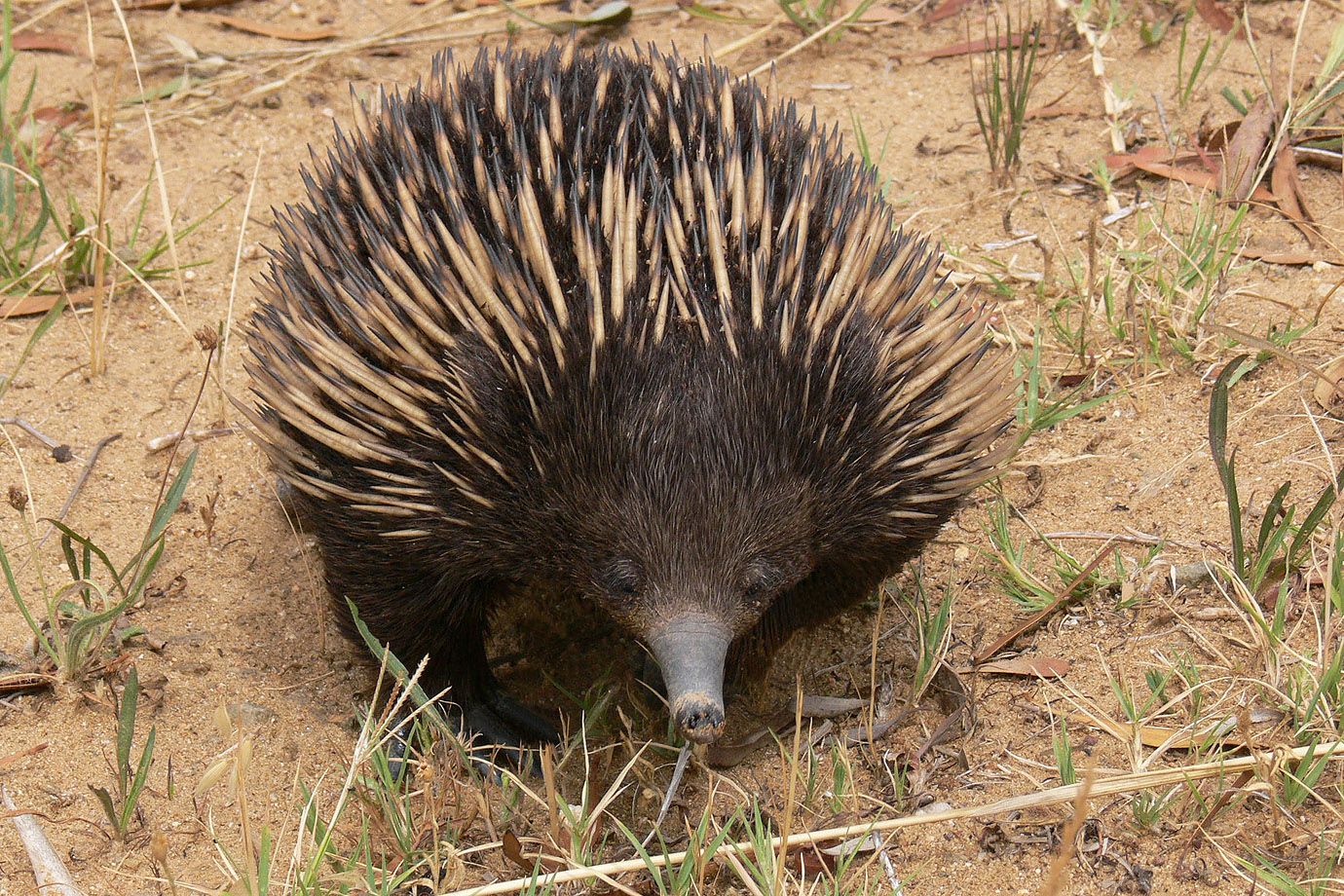
Short-beaked Echidna
The Short-beaked Echidna is one of four living species of echidna and the only member of the genus Tachyglossus. The Short-beaked Echidna is covered in fur and spines and has a distinctive snout and a specialized tongue. Like the other extant monotremes, the Short-beaked Echidna lays eggs; the monotremes are the only group of mammals to do so. The species is found throughout Australia, where it is the most widespread native mammal, and in coastal and highland regions of southwestern New Guinea.
The solitary Short-beaked Echidna looks for a mate between May and September. Each mating results in the production of a single egg, and females are known to mate only once during the breedingseason. Fertilisation occurs in the oviduct. Gestation takes between 21 and 28 days, during which time the female constructs a nursery burrow. Following the gestation period, a single rubbery-skinned egg is laid directly into a small, backward-facing pouch that has developed on her abdomen. Ten days after it is laid, the egg hatches within the pouch. The embryo develops an "egg tooth" during incubation, which it uses to tear open the egg.
Source: en.wikipedia.org/wiki/Shortbeaked_Echidna -
05.05.2010
Short-beaked Echidna
It is astonishing how similar the Short-beaked Echidna is to a Hedgehog living in Germany, though it lays eggs and is a marsupial.








